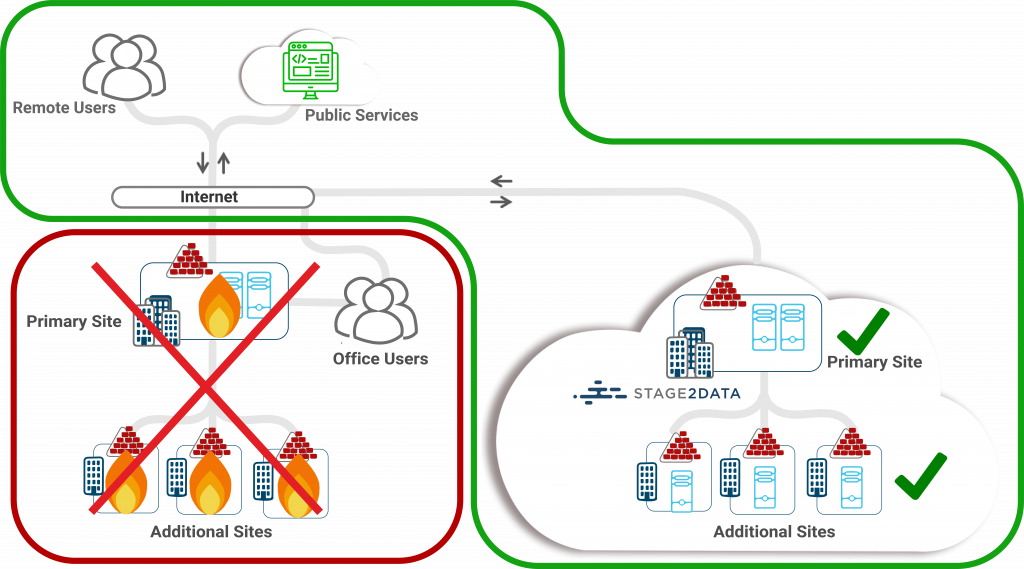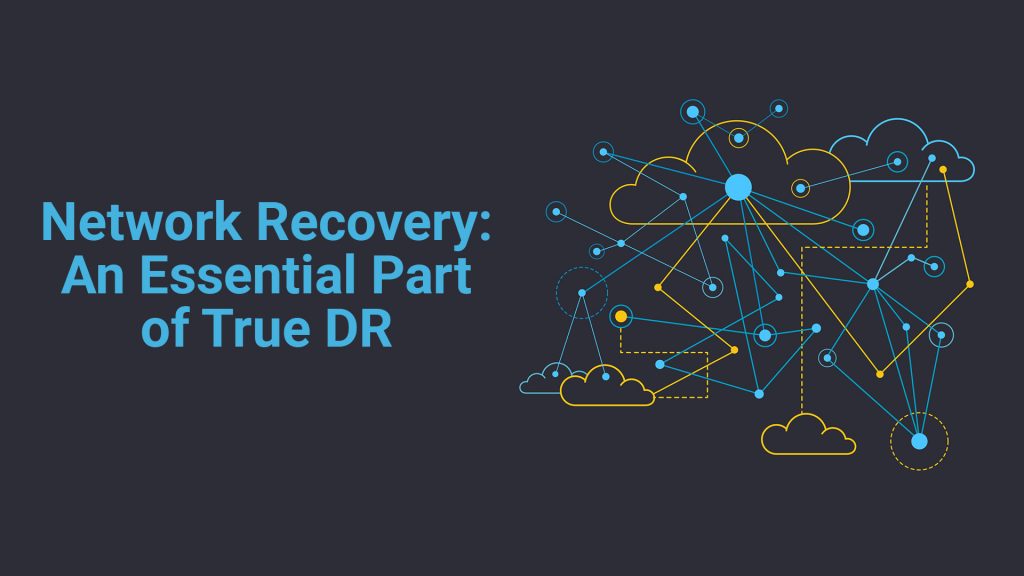All across the globe, businesses are becoming increasingly reliant on their IP networks to keep operations running. This, coupled with the growing trend of voice, data, and video convergence over a single IP network, makes an organization’s network infrastructure one of the most critical elements in its overall operation.
Organizations can no longer afford to neglect a thorough and comprehensive plan for the continued availability of their network infrastructure as part of their disaster recovery efforts. This truth is highlighted even more when you consider the results of a survey conducted by Opengear. They surveyed both CIOs and network engineers worldwide, and the results revealed that 91% of organizations experience network downtime at least once a quarter.
Yet, most disaster recovery solutions providers do not consider network recovery when proposing traditional disaster recovery services. Given this, you might be wondering why network disaster recovery is so important? Let’s explain.
Key Functions of Network Disaster Recovery
A disaster recovery strategy that includes network recovery is essential for ensuring the continuity of critical business processes and services. The key functions of a network disaster recovery plan include:
- Network Redundancy: Implementing redundant network connections and equipment to ensure continuous availability in the event of a failure.
- Network Segmentation: Dividing the network into smaller segments to isolate issues and minimize the impact of a disaster on the entire network.
- Failover Mechanisms: Configuring systems and devices to automatically switch to an alternate network path or component in case of a failure.
- Regular Testing and Monitoring: Continuously monitoring network performance, implementing best practices, and conducting regular disaster recovery testing is vital to identify potential issues and assess the effectiveness of your disaster recovery plan.
- Backup and Recovery of Data: Performing regular data backups and establishing procedures for the recovery of critical data and systems in the event of a disaster.
- Policy Information and Compliance: Including relevant disaster recovery policies, conducting regular compliance checks, and ensuring that the plan is up to date with industry standards.
The goal of including network recovery as part of your disaster recovery solution is the restoration of your organization’s critical systems and applications to minimize downtime and mitigate the impact of network disruptions.
Why the Focus on Network Infrastructure?
Network infrastructure is crucial for a company’s overall operation for a number of reasons. It serves as the foundation for secure and efficient communication and information sharing, enabling efficient collaboration among employees regardless of their location.
It’s also essential for customer-facing applications and services as it ensures fast response times and constant availability, thereby contributing to superior customer experiences and providing a competitive advantage.
In short, most, if not all, of your operational functions are heavily dependent on your network infrastructure working. To illustrate, imagine this:
A sophisticated ransomware attack cripples both the primary and secondary data centers of your company. The attack, spreading rapidly, encrypts critical data, shuts down your servers, and disrupts network communication. The primary data center succumbs to the attack first, triggering the failover to the secondary site. However, the ransomware’s virulence extends to the secondary site, rendering it inoperable as well. This dual-site failure results in a complete loss of network connectivity.
What now?

In this situation, Network Recovery-as-a-Service (NRaaS™) will be indispensable. Its failover within Stage2Data’s private cloud ensures immediate access to virtual machines and critical data, preserving network integrity despite the widespread disaster. The service’s ability to maintain internal and external IP addresses becomes crucial, offering a resilient solution in the face of a crippling and far-reaching catastrophe.
What is NRaaS™ and How Does It Support Your Disaster Recovery Strategy?
Network recovery is the process of recovering and restoring business operations on a computer network. It is similar in scope to disaster recovery in the sense that both services are tailored to prepare organizations for disasters that could disrupt network services, among other things. NRaaSTM, along with an organization’s disaster recovery strategy, ensures that network services are restored and downtime is minimized following a disaster.
NRaaSTM is essential not only in the event of a disaster but also in cases of hardware failure, cascading failure, internet connection failure, human error, and network attacks. It gives businesses the freedom to set up the time when site recovery testing is expected to complete, allowing them to test the RTO for specific site recovery.
Stage2Data’s NRaaSTM ensures seamless disaster recovery with failover to their private cloud, preserving external IPs for uninterrupted access while virtual machines and data are instantly available and fully functional. This solution empowers organizations to test their recovery time objectives (RTO) to guarantee they can be met, offering peace of mind and business continuity assurance.
Here’s a quick 48s video visualising this process:
Final Thoughts
Integrating network recovery into your disaster recovery strategy ensures the resilience of vital business processes. Each aspect, from network redundancy to failover mechanisms and regular testing, plays a pivotal role in minimizing downtime and mitigating the impact of disasters. The reliance on network infrastructure for seamless communication, customer service, and operational efficiency further emphasizes its significance.
In the face of potential disasters, such as widespread ransomware attacks, NRaaS™ emerges as a critical lifeline. Offering failover within a private cloud environment, it guarantees rapid access to essential data and services, preserving network integrity amidst adversity.
Ultimately, NRaaS™ not only ensures continuity in the event of disasters but also mitigates risks stemming from hardware failures, human errors, and cyberattacks. By empowering organizations to test and meet their recovery time objectives, it provides a crucial layer of assurance for sustained business operations. Embracing network recovery within disaster recovery strategies is not merely prudent—it’s imperative for navigating the complexities of today’s digital landscape.
To learn more about NRaaS™ and it’s importance to your business operations, speak to us.





